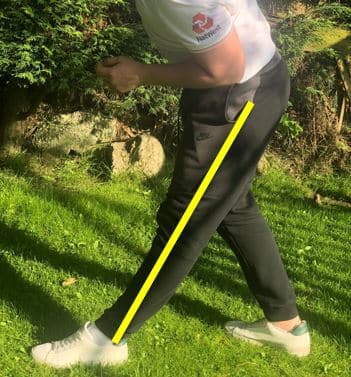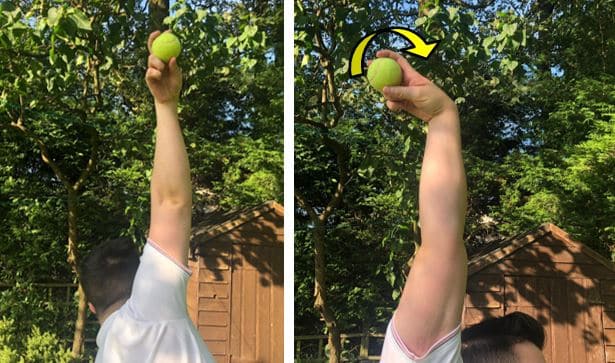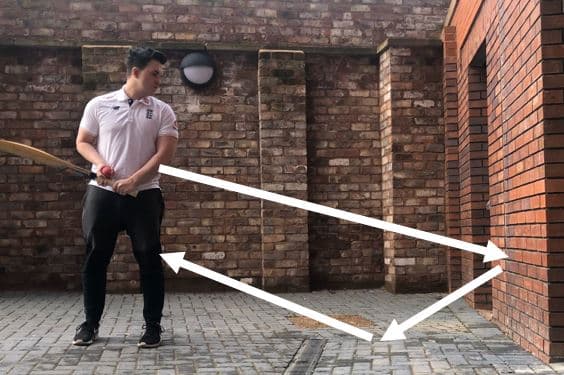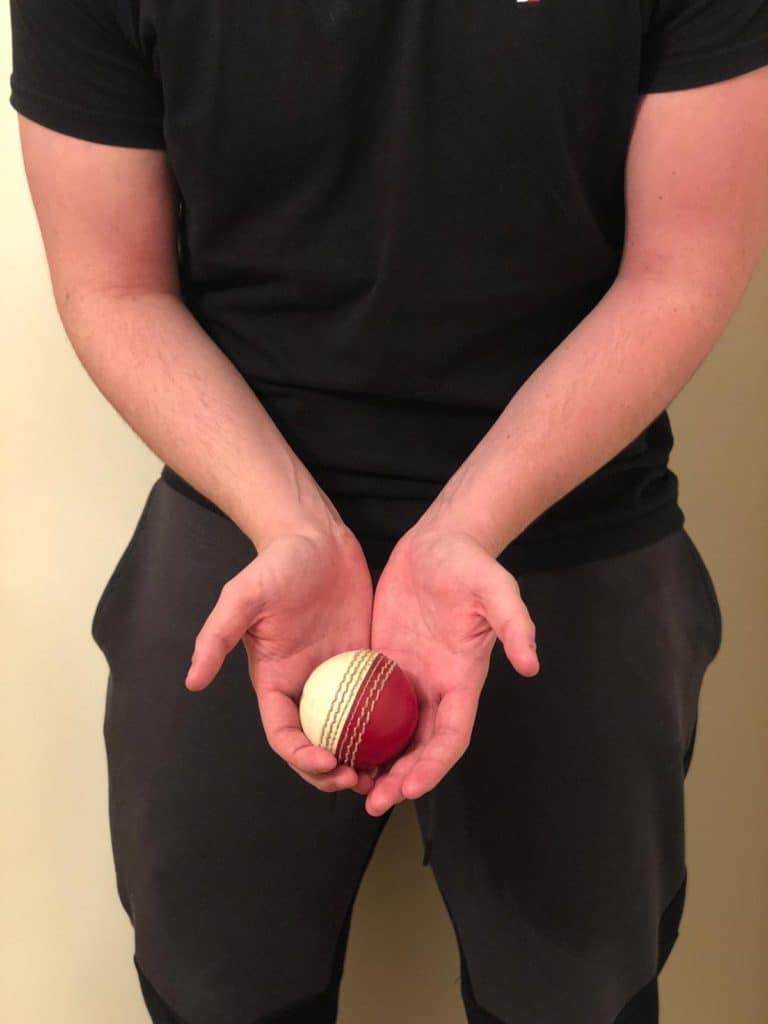I’ve spoken to many young or inexperienced cricketers in the time that I’ve been involved in the game, and many of them were never sure how long they should be spending practicing throughout the season and during the winter. If you’re suffering from this type of uncertainty too, it can lead to you not getting enough practice during critical years of your career where development is key! For me, not putting enough hours in on the practice field when I was a young adult is one of my biggest regrets! I know I could have been a much better batsman if I had found ways to practice more effectively when I was away from my club!
In this post I’m going to try to provide you with a wide variety of information. We’ll look at the practice schedules of professional cricketers and try to find out how long different players and different teams spend working on their game. I’ll also give you some rough estimations of how long you should be practicing each area of your game if you’re an amateur cricketer.
So, how often should cricketers practice?
The answer is it varies! For amateur level players playing club cricket, it’s common to only practice 1-2 hours per week, and play in 1 competitive match per week. This is a baseline standard, but if you want to see major improvements I would recommend trying to get more practice than this. Professional cricketers will devote several hours almost every day during cricket season to some kind of cricket related activity.
Obviously, not all amateur players have the ability to devote time each day to practice. The number of hours that cricketers have available to them is usually dependent on a variety of things. These things include the level of the game they are playing at, how old they are and whether they have a job, whether they’re a member of a cricket club, what their fitness level is and what kind of facilities they have available at home. However, despite all of those factors, I’m a firm believer that you should be devoting as much time to practice as you possibly can.
If you have any aspirations of becoming a professional cricketer, there’s nothing that will help you out more than getting plenty of practice! Remember, you’re in competition with thousands of other cricketers in your age group, many of whom will be working very hard on their game! If you want to get ahead, you’ll have to put the work in!
How Often Should You Be Practicing Your Bowling?
If you’re a bowler, it’s critical that you properly consider how much time you devote to practicing your bowling. Most bowlers require repetition and rhythm to build confidence, accuracy and speed, but they also need their body to remain fresh enough to perform at their peak during cricket matches. This is particularly important for fast bowlers! Fast bowlers who push themselves too hard for too long in practice are more likely to get injured than a bowler who slowly builds up their practice intensity over time. Fast bowling puts a lot of stress on the body, so you don’t want to overdo things!
Most bowling practice will take place during or in the couple of months before the cricket season begins (known as the pre-season), but it is definitely important to try to maintain a good level of bowling fitness and rhythm in the winter season too. During the winter season I’d try to get at least one hour of bowling practice per week as this will help you to not lose too much rhythm/muscle memory during the off season. If you can get any more practice than this then that would be ideal! Many cricketers will move to practicing in indoor nets during the winter, so if there are any facilities like that available to you then make sure you make use of them!
As for the cricket season and the pre-season, the ECB have come up with a nice little bit of guidance to help judge what is the maximum amount of practice you should be engaging in. They call it the 7/4/2 rule and it goes like this:
‘In any 7 day period a fast bowler should not bowl more than 4 days in total during that period. They should also only bowl for a maximum of 2 days in a row’
If you can apply this rule to your practice, it should help you to ensure that you aren’t bowling too much. On the days where you do practice during the season, I would recommend trying to bowl for at least an hour, taking a short break every ten balls or so. If possible, I would recommend trying to extend your bowling practice session to longer than this, so that you can mix up your methods of practice a little bit. Longer practice sessions will also help you to replicate what it will take to bowl long spells during a real match. This guidance applies to spin bowlers too, however some spin bowlers may feel that they can practice more as the action required doesn’t put as much stress on the body as the fast bowling action.

Including a decent amount of variation in your practice is also incredibly important. It helps to keep the mind focused by setting yourself new challenges and goals. Plus, it helps keep things fun! There are many different things you can do to keep your bowling practice fresh and varied, here are a few of my favourites:
- Bowl at a batsman in the nets – There’s not many better ways of practicing your bowling than bowling to an actual batsman. This helps you to develop ways of getting batsmen out as well as stopping them scoring runs.
- Use target practice drills – Whether you’re targeting certain areas on the pitch, or simply targeting the stumps, target practice drills are a great way of improving your bowling accuracy. If you’d like to read more about improving your accuracy as a fast bowler, click here!
- Work on your variations – All fast bowlers will eventually need to develop at least one ‘variation’ delivery like an off cutter or a back of the hand slower ball. Spin bowlers will work on deliveries like the googly or the top spinner. The only way you can perfect these and learn to bowl them accurately is by practicing them for hours in the nets! To read more about the different types of slower balls, click here. For the different types of spin bowling variations, click here.

- Set up match scenarios – This is one of my favourite forms of bowling practice. Set an imaginary target for the batsman you’re bowling to, such as needing 10 runs from your next 6 balls, and see if you can bowl in a way that would stop the batsman hitting big shots. This really helps you prepare for real cricket matches.
- Engage in some competition – If you’re practicing alongside other bowlers, add a little bit of competition by challenging each other to hit the stumps as often as possible. You can also challenge batsmen to not let you get them out!
- Focus on your technique – You can also engage in more technically focused training sessions where you work with a coach to perfect aspects of your bowling action. I find that during these sessions it helps a lot if you record yourself too, so you can see what your bowling action really looks like.
All of the different types of bowling training I’ve mentioned above are incredibly useful, and you should definitely try them all out from time to time.
Another thing I’d like to mention is that it’s incredibly important to make sure that you practice bowling to both right and left handed batsmen just as much as each other. Stuart Broad said recently that after he spent years bowling to England’s left hand dominated batting line up in practice sessions, he lost his ability to bowl effectively at right handed batsmen. This took him a lot of time to recover from. He now says that whenever he bowls in practice, he will make sure that he devotes an equal amount of time to bowling to both left and right handers.
How Often Should You Be Practicing Your Batting?
Batting isn’t as physically strenuous as bowling, so the guidance for how much you should be practicing changes a little. Batting for long periods of time probably takes a larger toll on your mental state, as it’s very easily to become mentally fatigued after you’ve been concentrating hard whilst batting for a few hours!
So, if you’re an up and coming batsman, how often should you be practicing? Sadly, there is no easy answer to this as all batsmen require different things, but in my opinion you should simply be trying to get the largest amount of high quality practice you can during the cricket season.
By facing a large amount of high class bowling and facing plenty of challenging deliveries, you can make sure that you’re fully prepared to deal with them in the future. When batting, your brain will allow you to react much faster to certain types of deliveries if you’ve faced them plenty of times in the past. This is because the brain already has several responses stored that it can call on quickly. If you haven’t put the work in on the practice field, the brain is less likely to have effective muscular responses that it can use to deal with tough deliveries. As a result of this you’ll be more likely to struggle whilst batting!
If you’re an up and coming batsman, then as an absolute minimum you should be aiming to get 1 hour of batting practice per week during the cricket season. However, if possible, I would always aim to practice more than this. 3-4 hours of good quality batting practice per week would be great, and it would also be achievable for a lot of cricketers.
Most batsmen will have an hour of practice with their clubs each week during the season, but try to get more wherever you can. Whether you sign up for extra sessions, or even if you practice at home with family or friends – it all adds to making you a better player. If you’d like some of my advice on how you can develop methods of batting practice whilst you’re at home, click here to read my post covering it!

During the winter months, I would again try to get as much practice as possible in indoor nets. It’s hard to find the right time to practice outside during winter due to poor weather conditions, but practicing indoors whenever possible can help us to keep our rhythm and take some batting form into the summer! No cricketer wants to be returning to pre-season practice having not picked up a bat for months!
A Brief Overview of How To Practice Your Batting
Whenever you bat during practice, try to ensure that your time is used effectively. Trust me when I say that an hour of organised, structured practice will be much more beneficial to you than two hours of practice where you have no goals and no aims for the session. When we are playing an innings during a match, we often have the goal of scoring runs. We may also wish to survive and bat out a session, or see off a particular bowler. Sometimes in practice we can lose this sense of purpose because there are no consequences if we play bad shots or get out. I’m a firm believer that you should always hold yourself to high standards during practice sessions, because then you will carry those standards into games much easier.
To keep the majority of my practice sessions focused around clear goals, I will usually dedicate each one to something specific. When I have more than one thing I’d like to work on, I’ll try to practice for longer to work on the other things too. For example, during one session I may want to work on my cover drive, or my ability to deal with the short ball. In another I may want to work on my ability to line the ball up outside off stump along with my defensive game. Setting goals like this helps you to make sure that your practice sessions don’t become a mess where you’re not really working on anything in particular. It’s much easier to lose concentration if you practice like that.

Having said all of that, it’s likely that during some of your practices you won’t be able to target specific areas of your game. For example, when I practice with my club, I get bowled at by a range of bowlers, and all of them will be bowling in different places. This makes it hard to set clear goals. This is one of the reasons that I think it’s vital to practice away from your club, so you can work on aspects of your technique in more detail.
A Look At How The Professionals Do Things…
I like to take inspiration from great cricketers, and if you’ve watched any of the sport in recent years then you’ll know what a great batsman Steve Smith of Australia is. His record up to this point in his career has been so great that it has led to many people questioning exactly how he’s able to bat the way he does and score runs so consistently.
Thankfully, his team mates and coaches seem to have provided us with the answer! Justin Langer was quoted as saying that Steve Smith hits twice as many balls during practice than anyone he’s ever played with or coached. This is quite astonishing when you remember that the Australian team Langer played in featured many elite players like Ricky Ponting, Matthew Hayden and Adam Gilchrist! Facing this number of deliveries means that his batting technique is incredibly well grooved. Against every delivery he has a number of shots that he can play, and he is able to get into position to execute the shot very quickly.
Probably more important than anything though, is the fact that he’s trained himself to pick the line and length of the ball up very early after it leaves the bowlers hand. I remember him saying in an interview that he’s learnt to do this by limiting his use of bowling machines as much as he possibly can during net sessions. When you face a bowling machine, you don’t get used to watching the ball leave the bowler’s hand, so it isn’t really fully preparing you for what you will face in a game. If you can face actual bowlers during net sessions, or receive throw downs from coaches, this replicates the conditions you will see in a game a little more and will allow you to improve your ability to pick line and length early out of the bowler’s hand.
How Often Should You Be Practicing Your Fielding?
Fielding is an important, often overlooked part of the game of cricket. Cricketers who practice their fielding regularly will become more of an asset to their team, especially in an age of cricket where exceptional fielding is becoming more common. You only have to look at the fielding skills on display during the IPL and ODI world cups to know what I’m talking about!
If you’re a member of a cricket club then they should be providing time for you and your team mates to work on your fielding skills in your scheduled practice sessions during the cricket season. These sessions should cover a range of things including ground fielding (gathering & stopping the ball), throwing, catching (high catches and low, fast catches) and backing up. If you want to get some of my favourite fielding tips that cover all of those areas, then click here!
Outside of your scheduled practices, it’s always good to get some practice in your own time too. When I say this, a lot of people think that I mean you have to set up specific fielding practice drills at home, but this isn’t the case. A lot of my childhood was spent playing various throw and catch games with friends, and even this allows you to work on your fielding skills. It is practice made fun, which is the best form of practice in my opinion! I was a kid that always had a ball in my hand, whether it was a cricket ball or a tennis ball. I was constantly throwing them around, bouncing them off walls and other things like that. When you do those things for a long period of time, it really helps you to improve your hand eye co-ordination and get comfortable with handling a ball.

To sum this section up, you should be spending a decent amount of time practicing your fielding during the cricket season, at least an hour a week. During the winter it’s much harder to get good fielding practice, so just try to ensure that you remain in a good state of general fitness and work on your other cricketing skills.
How Often Should You Be Working On Your General Fitness?
Cricketers need to be fit if they’re going to be able to perform at their highest levels for long periods of time. So, what is the best way to get yourself into a good level of fitness?
Cricket is an explosive sport, where short bursts of energy are required in small periods of time. For example, when bowling, a fast bowler will exert a lot of energy during the run up and bowling phase, but then will have a rest period as they follow through and walk back to their mark. They also get a break between overs. The same goes for batsmen. They may score a run for multiple deliveries, but then they may have to quickly set off for a fast single. Lastly, it’s also true for fielders! You can stand in the field for a long time without the ball coming your way, and then all of a sudden, the ball will fly towards you, meaning you have to set off quickly to retrieve it.
As a result of all this, engaging in interval training is a great option for cricketers. Interval training mimics the activities involved in cricket quite well because it forces you to expend large amounts of energy in short bursts, followed by rest periods. For example, a basic interval training session may look like this:
- 5-minute warm up including jogging and stretching
- 30 seconds of 70-80% intensity sprinting
- 60 seconds of rest at a walking pace
- Repeat steps 2 & 3 another 4/5 times, or for as long as you possibly can.
Obviously, there are plenty of variations to this, but the main premise is the same. Short periods of intense energy expenditure, followed by longer rest periods. If you can incorporate these into fitness sessions, it will serve you well. How often you train in this way will depend on your current fitness level, but having a session like this at least once a week is a good way to keep up your cardiovascular fitness.
I also think it’s very important to maintain a good level of flexibility and strength. I personally try to go to the gym at least 3 times a week, where I lift weights and stretch before and after my session. Every cricketer is different, so they will require different strength training programs, but it’s easy to find something that works for you once you get into the habit of doing it!
If you’re not in a particularly good state of fitness, then you may wish to train more regularly as this will help you to make improvements quickly.
Conclusion
I hope this post has helped to provide some insight into the types of practice that are required for cricketers. Sadly, there is not a one size fits all approach to practice. Some cricketers will require more than others! But this also offers great advantages to those of you who are incredibly motivated to succeed in the game. My approach to cricket is simple; the more quality practice you get, the easier it will be for you to ascend to the heights of the game! I wish you lots of luck in that journey!
